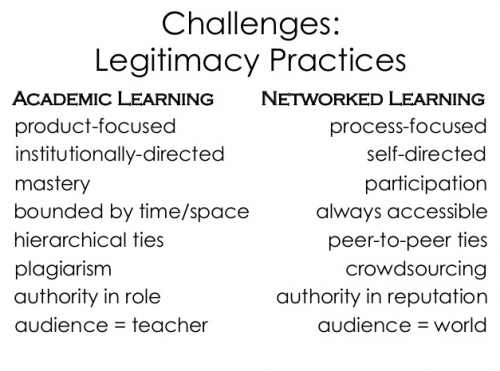I began teaching online in 1998, the same year I encountered Donna Haraway’s Cyborg Manifesto (1991) for the first time. Her cyborg – partial, ironic, always hybrid – offered a model for identity that helped me navigate that new environment. The cyborg’s emphasis on breaking down (and de-naturalizing) binaries enabled and encouraged me to grapple with some of the institutional and technocratic power relations that shaped our online learning context, in ways that have continued to influence my understanding of my educational practice and my research to this day.
The cyborg teacher is a hybrid, both an instrument of the schooling system and yet subversive to it: the cyborg teacher is a learner too. Teaching from the cyborg point of view helped me frame my digital classroom not as “less” or “more” than conventional learning spaces, but instead as a site for building ties of curiosity and affinity. It helped me escape the concept of the virtual and approach my online work very much as real; human and technological, both.
Now, fifteen years down the road, I see the cyborg particularly as a metaphor for networked identities. These are the kinds of selves cultivated when people integrate online social networks into their personal and professional practices not just as consumers but producers: when they blog, tweet, filter, curate, and share ideas within networks of shared interests.
In a time when our technological platforms are primarily corporate-owned and even mundane daily practices like bank card usage expose us to constant digital surveillance, the cyborg strikes me as a particularly important figure. A teacher by example, she collapses the binary distinctions our media narratives are so eager to create about social technologies.
The message of the cyborg, as I see it, is that we are complicit, part of this digital world. But we are not necessarily subject to its terms: in an age in which human agency can seem dwarfed by the innumerable invisible digital systems we interact with, the cyborg – illegitimate offspring of the very things she subverts – stands for me as a figure of hope.
